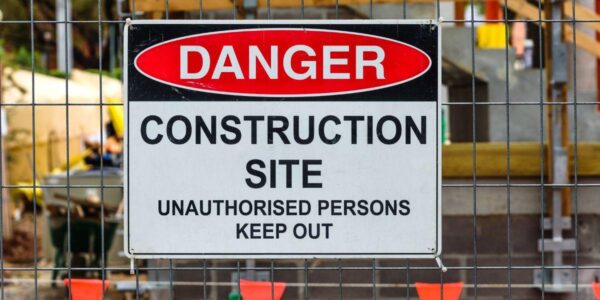
Ask any contractor to tell you about a close call they had on the job site and get ready for what is likely a very good story, and there are probably a few of them!
What is a Near Miss?
By now, you’ve probably figured out that a near miss is any time something happens on your job site that comes very close to causing harm to a person or property.
You can also consider an occurrence as a near miss if it would have caused harm if someone had been in the vicinity. For example, if someone drops a hammer off the second story of a building, it doesn’t have to come close to hitting someone to be considered a near miss.
Some other examples of near misses are:
- Someone trips on an extension cord but doesn’t harm themselves
- A forklift bumps a skid of material, it teeters but does not fall
- An extension ladder tips over, narrowly missing a parked truck
The only difference between these occurrences and an actual accident is luck. Had the extension cord been next to a stairwell, had the forklift been moving a bit faster, or if the truck had been parked differently, the outcomes could have been disastrous. This is why you need a well-developed construction safety program.

What to do When a Near Miss Occurs
In short, when a near miss occurs, treat it like it was an accident.
Every near miss should trigger an investigation into what went wrong, determining all the contributing factors. Then changes need to be implemented in order to prevent a future accident.
In order for the near miss process to work, your crews need to know they are responsible for reporting them when they happen. Had my repair guy not gotten stuck in the roof, I probably wouldn’t have found out about it because there was no injury to report, and we didn’t have a near miss program.
Also, there must be no fear of repercussion when reporting a near miss. You absolutely cannot ask someone to report one and then reprimand the error, especially if it was human error.
A near miss must be looked at as a learning opportunity that will protect the future safety of all your employees.
What are the Benefits of Implementing a Near Miss Program?
Handling incidents as a near miss rather than waiting for the inevitable accident to occur means your job sites are safer. Safer job sites are, first and foremost, important to your employees, but they also save your company money.
Basically, you are getting all the changes and modifications that follow an accident to improve the safety at your company without having to report an actual incident.
Lowering the number of reportable incidents means your experience modification rating (EMR) will go down, and that, in turn, will lower your worker’s compensation and insurance premiums!
How SafetyHQ Makes Near Miss Reporting a Breeze
You should already be convinced that tracking, investigating, and following up on every single near miss at your company makes logical sense and will reduce your workload down the line. But you are probably wondering where you will find the time to do that.
Utilizing a safety management system like SafetyHQ is probably your best solution. Every SafetyHQ client receives a custom-built incident reporting and follow-up form, making it easy for:
- Your foremen to fill out a quick form about what happened, capturing all the relevant info and even pictures
- You to be immediately notified of the near miss
- You or a supervisor to complete an investigation on contributing factors
- Management to review graphs and trends involved
- Positive changes to be implemented
Share Article
Keep on current news in the construction industry. Subscribe to free eNews!



